Let’s get real about advertising optimizers (also known as Google Ads tools) from someone who’s worked in PPC for years.
In this post, I’m going to walk you through 14 of my favorite tools for advertising optimization: tools that work well.
No fluff, no gimmicks, just straightforward talk about what works.
What Is an Advertising Optimizer and Why Do You Need One?
An advertising optimizer is a third-party solution (or first-party add-on) that connects to your ad platform (Google Ads, Bing Ads (Microsoft), Meta, Amazon, etc.) and adds extra features to:
- Automate parts of your ad management, like bidding or pausing underperformers
- Offer suggestions for better targeting and messaging based on data
- Provide deeper insights or aggregated reporting across multiple platforms
If you run any significant volume of paid advertising, you quickly realize that managing everything manually can lead to missed opportunities, wasted ad spend, or pure exhaustion.
An optimizer makes the process smoother, giving you more time to focus on strategy while it handles the repetitive work.
1. SEO.AI

I work at SEO.AI, so I’ve seen firsthand how our platform goes way beyond basic keyword optimization.
Our Feed Optimization feature isn’t just another checkbox - it’s a game changer, especially for e-commerce brands managing large product catalogs.
If you’re running Google Shopping, search ads, or dynamic remarketing, you already know your product data is everything.
The quality of your feed directly impacts your visibility and performance.
Here’s what sets SEO.AI’s feed optimization apart:
- Our AI rewrites and refines your product feed titles and descriptions to match real search queries - no more guessing what will convert.
- We automatically flag missing fields or formatting errors that can quietly kill your impressions.
- Seamless integration with major e-commerce platforms and ad channels—no clunky workarounds.
One of my colleagues who manages Google Shopping for a premium sports equipment brand saw a clear jump in click-through rate after optimizing their feed with our tools.
Titles that used to get cut off now show up perfectly in search, and the data is tailored for what shoppers are actually searching for.
If you’re running an e-commerce site or handling dynamic ads, I can say with confidence: SEO.AI is worth a look.
2. Optmyzr
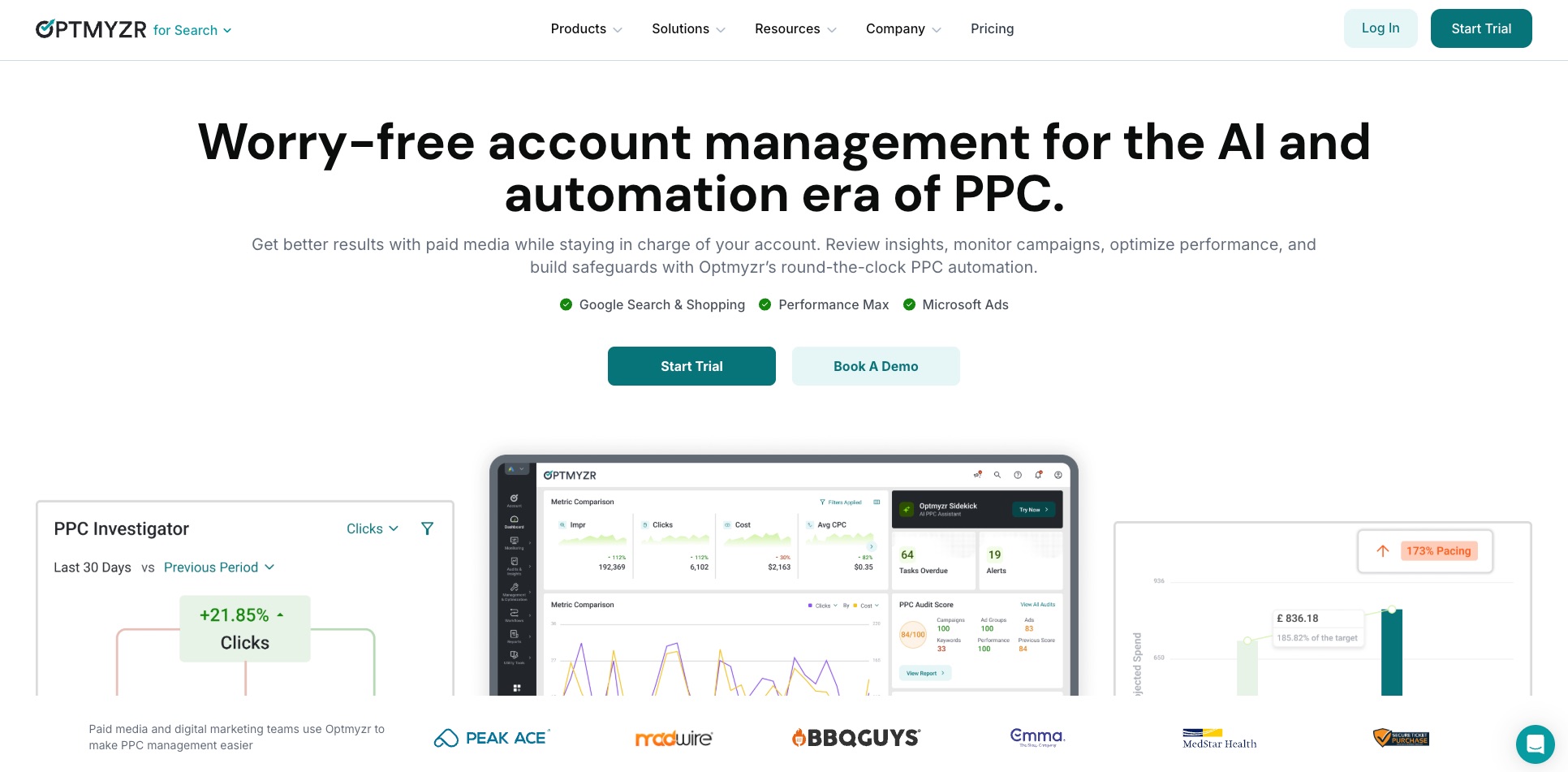
Optmyzr is a solid choice and one I often use for larger accounts. It was created by former Google Ads executives, and that shows in its detailed features.
Its Rule Engine automates tasks like adjusting bids or pausing keywords when they fall below set thresholds. You also get:
- One-click audits that show issues in your campaign setup
- Cross-platform support across Google, Microsoft, Meta, and Amazon
- Customizable automated reporting
It starts at about $209 per month, which may seem steep, but if you manage multiple high-spend accounts, it quickly justifies the cost. Agencies appreciate the fine control it offers.
3. WordStream Advisor
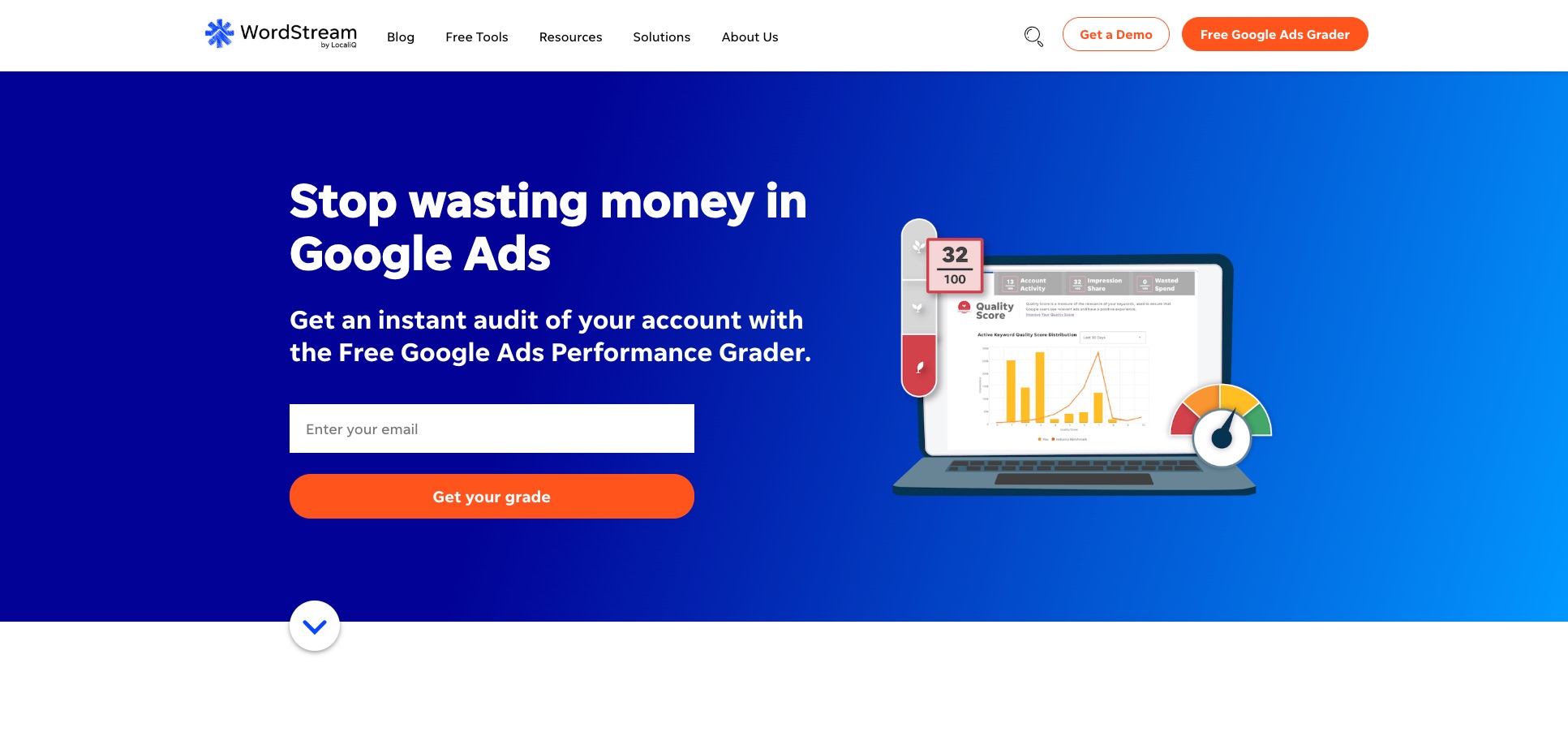
WordStream Advisor is often the first tool I recommend to new advertisers or small businesses seeking an easy-to-use solution.
The “20-Minute Work Week” feature highlights the most critical tasks in your account so you can act without getting lost in details.
Core highlights:
- Manages Google, Microsoft, and Facebook Ads in one dashboard
- Recommends negative keywords or identifies new opportunities based on current data
- Provides a built-in dashboard so you don’t have to switch between tabs
At around $294 per month for the starting tier, it isn’t the cheapest.
But if you appreciate a low learning curve and some cross-platform functionality, WordStream’s simplicity is worth it - especially for small businesses or new marketing teams.
4. AdEspresso
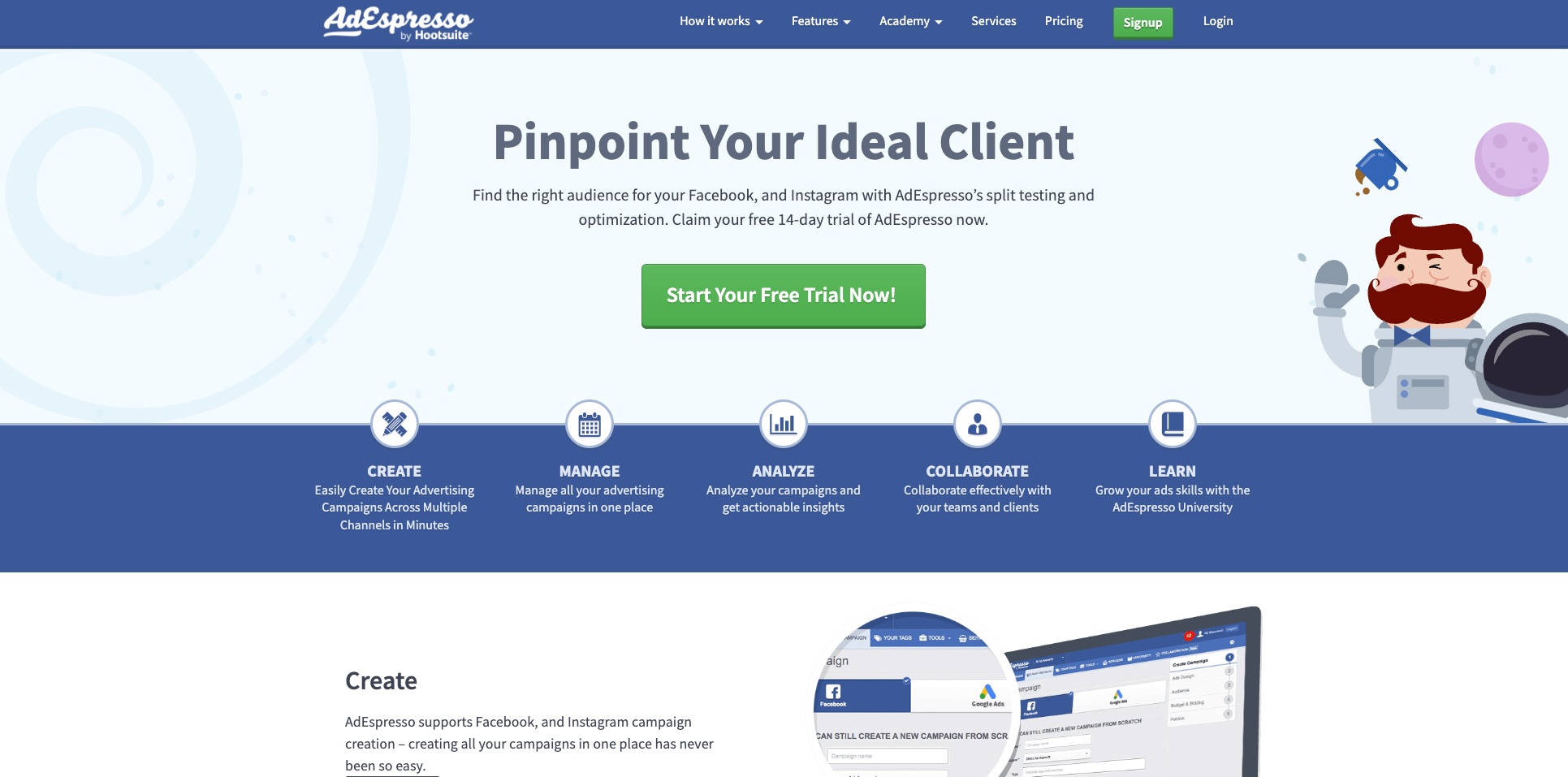
AdEspresso by Hootsuite established itself mainly in the Facebook and Instagram ad space.
I’ve used it for simple A/B testing, especially with social campaigns. It excels at testing different versions of copy, images, or targeting options.
- Offers detailed breakdowns of which ads perform best
- Supports bulk creation of multiple ad variations
- Provides unified reporting across Facebook, Instagram, and basic Google Ads
Pricing ranges from $49 to $259+ per month, adjusting with ad spend.
If your brand relies mainly on social ads but you also run a few Google Ads, AdEspresso delivers a consistent workflow, though its Google support is more basic.
5. Adzooma
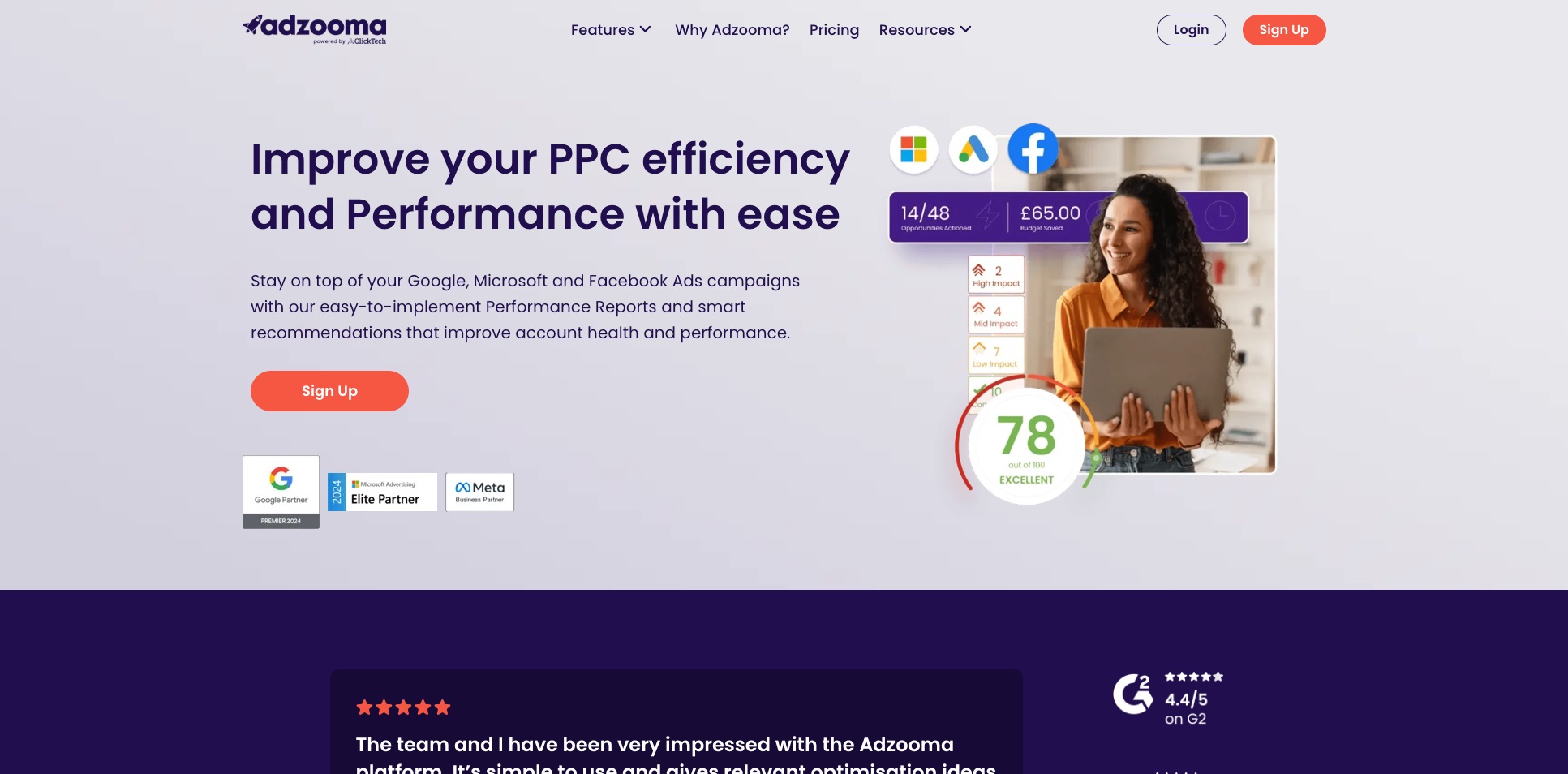
Adzooma caught my attention with its free Core plan, a big advantage for anyone on a tight budget. It offers:
- One-click AI-driven adjustments, such as modifying bids or budgets based on activity
- The ability to set up custom rules (for example, pausing ads with low click-through rates or increasing bids on strong performers)
- Alerts if something goes wrong
The premium plan starts at about $69 per month. Adzooma works with Google, Microsoft, and Facebook Ads.
It’s a good pick if you work across several platforms and want everything managed in one place. The free version might be enough unless you need more advanced features.
6. Semrush PPC Toolkit
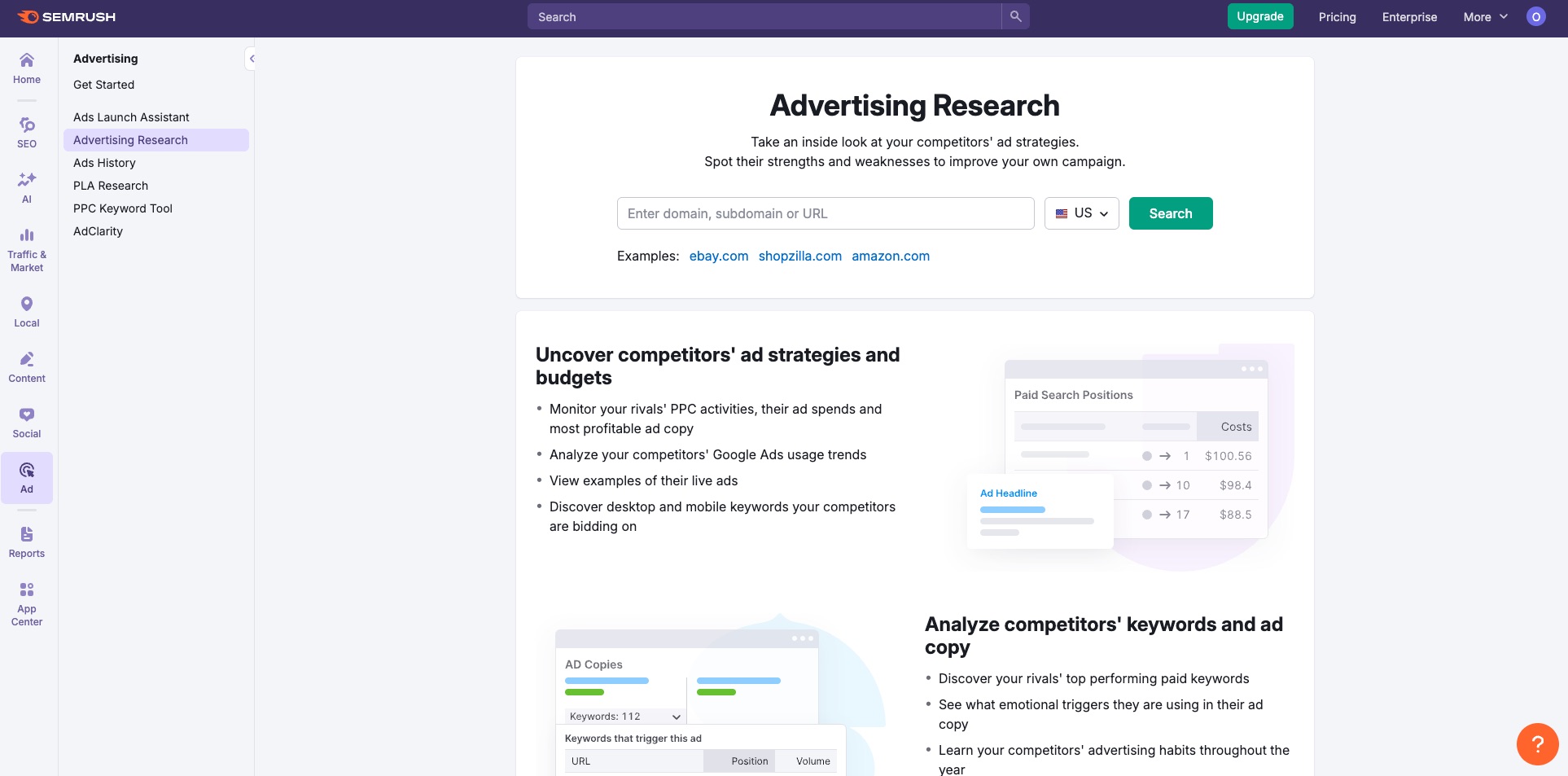
When you think of Semrush, you might immediately think of SEO research. However, its PPC Toolkit also offers valuable insights such as:
- Competitor keyword data
- Competitor ad copy and past performance
- Insights into display and Product Listing Ads (PLA)
Keep in mind, Semrush doesn’t actually run your ads. Consider it an intelligence tool. You still need to create and manage campaigns in Google Ads.
If you like to study competitors before setting up campaigns, Semrush can be very useful.
Pricing starts at $140 per month and goes up to about $500 for the more advanced plans.
7. HubSpot Ads

Many B2B marketers use HubSpot, so it makes sense to manage ads there too. HubSpot Ads offers:
- Targeting based on CRM data such as lifecycle stage, lead score, or email activity
- Reporting that connects ad interactions directly to deals or revenue
- Automated lead management, so new leads from ads are nurtured automatically
HubSpot has a free version with limited features, but the full experience requires the Pro plan at roughly $800 per month.
If your focus is inbound marketing and you want ad data connected to your CRM, this tool fits the bill.
8. Skai (Kenshoo)
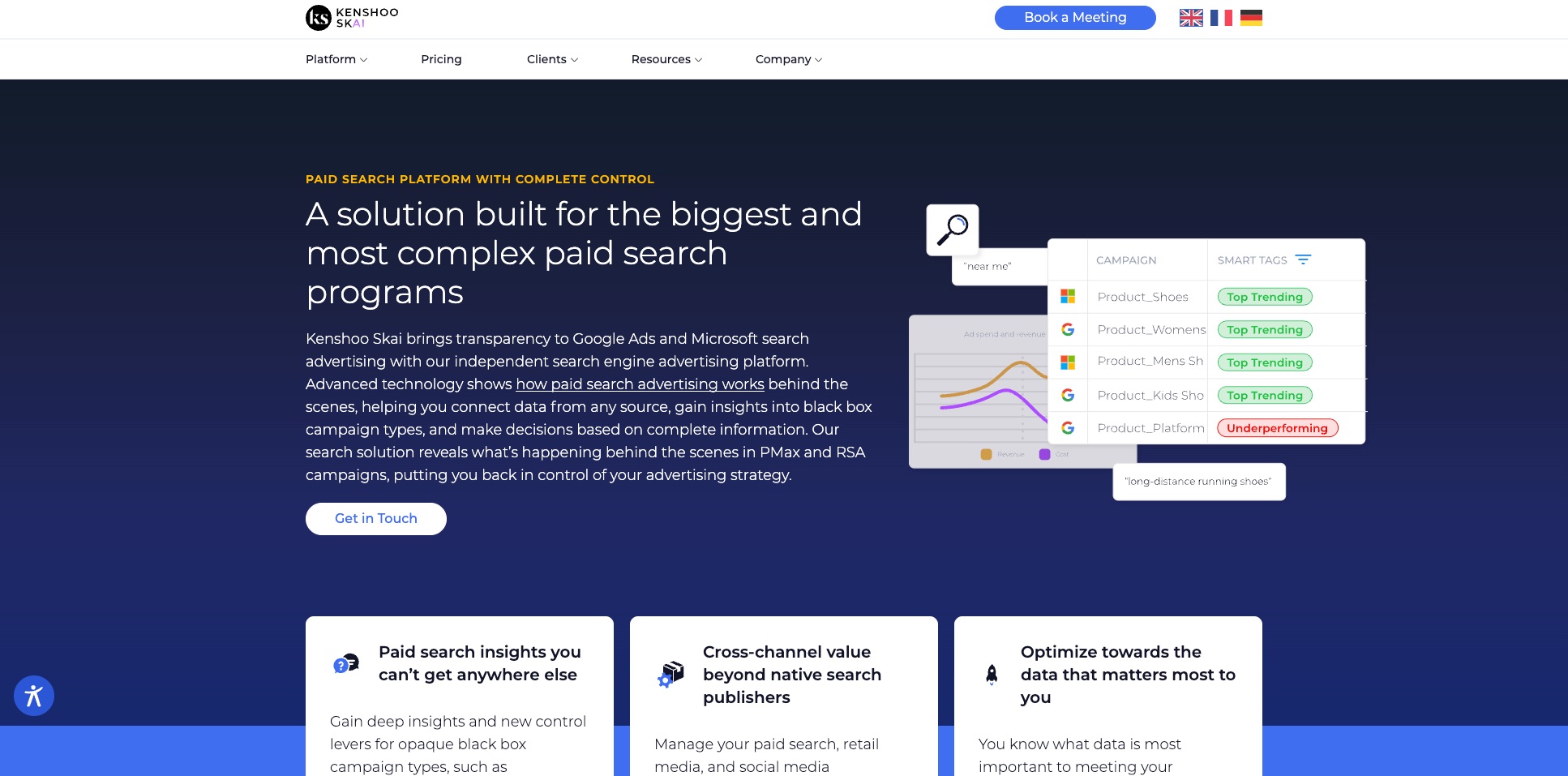
Skai, previously known as Kenshoo, is built for large brands with significant budgets spanning multiple channels: search, social, e-commerce, and sometimes even display networks.
Its strengths include:
- Flexible AI bidding
- Forecasting tools to predict performance under different budgets or bid scenarios
- Attribution across channels to see how different interactions combine
Skai is not inexpensive. It is custom priced and usually runs on annual licenses. For smaller businesses or those focused solely on Google Ads with limited budgets, it might be more than what you need.
9. MarinOne
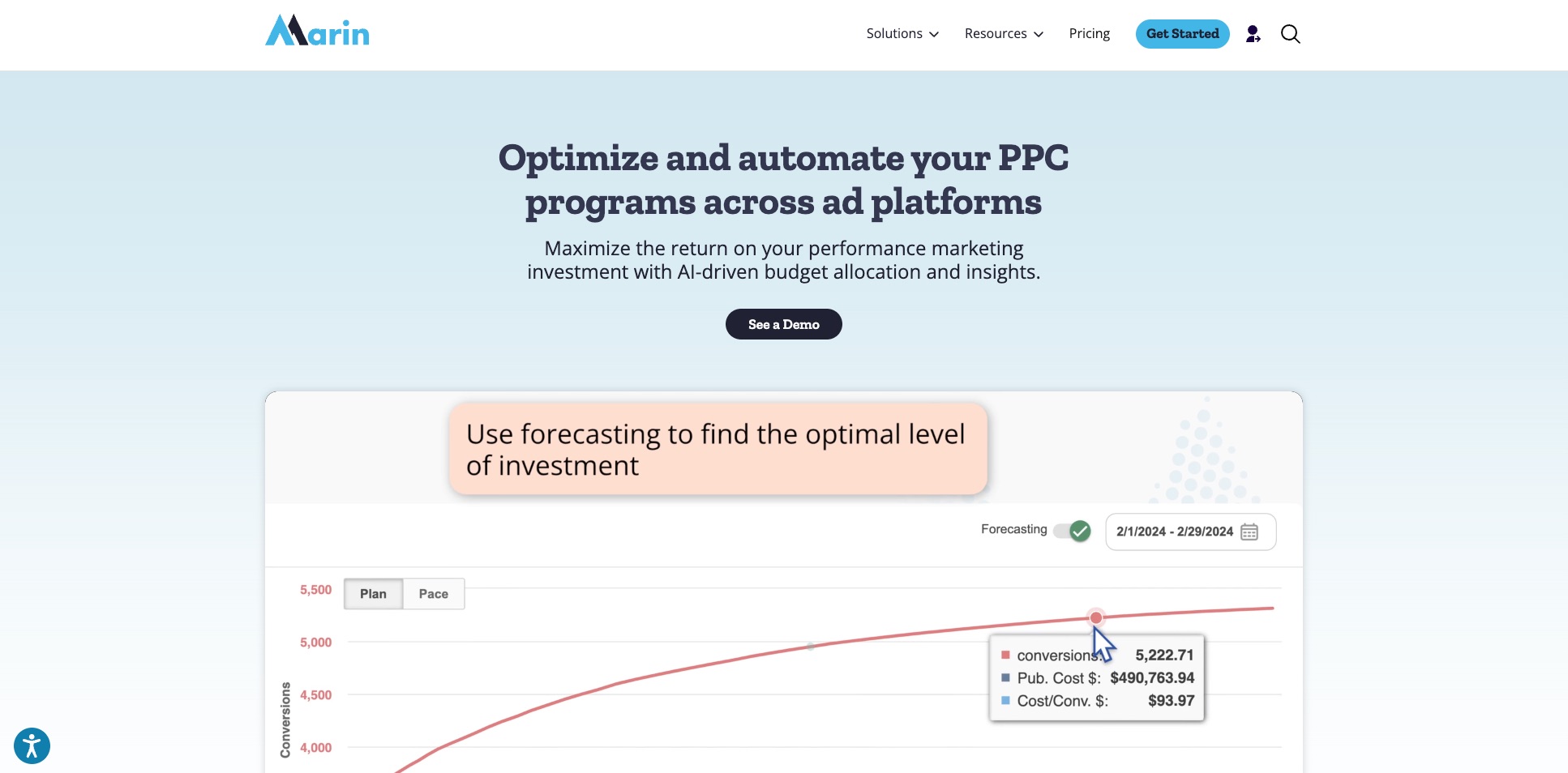
MarinOne competes in the same space as Skai, with a focus on managing ads across multiple platforms (Google, Microsoft, Meta, Amazon). It supports:
- Automated bidding based on real-time signals
- Detailed campaign management at scale
- Advanced feed management for e-commerce listings
With pricing starting around $500 per month, it is geared toward high-volume advertisers.
If you need to consolidate your data, MarinOne is a trusted option.
10. Revealbot (Birch)
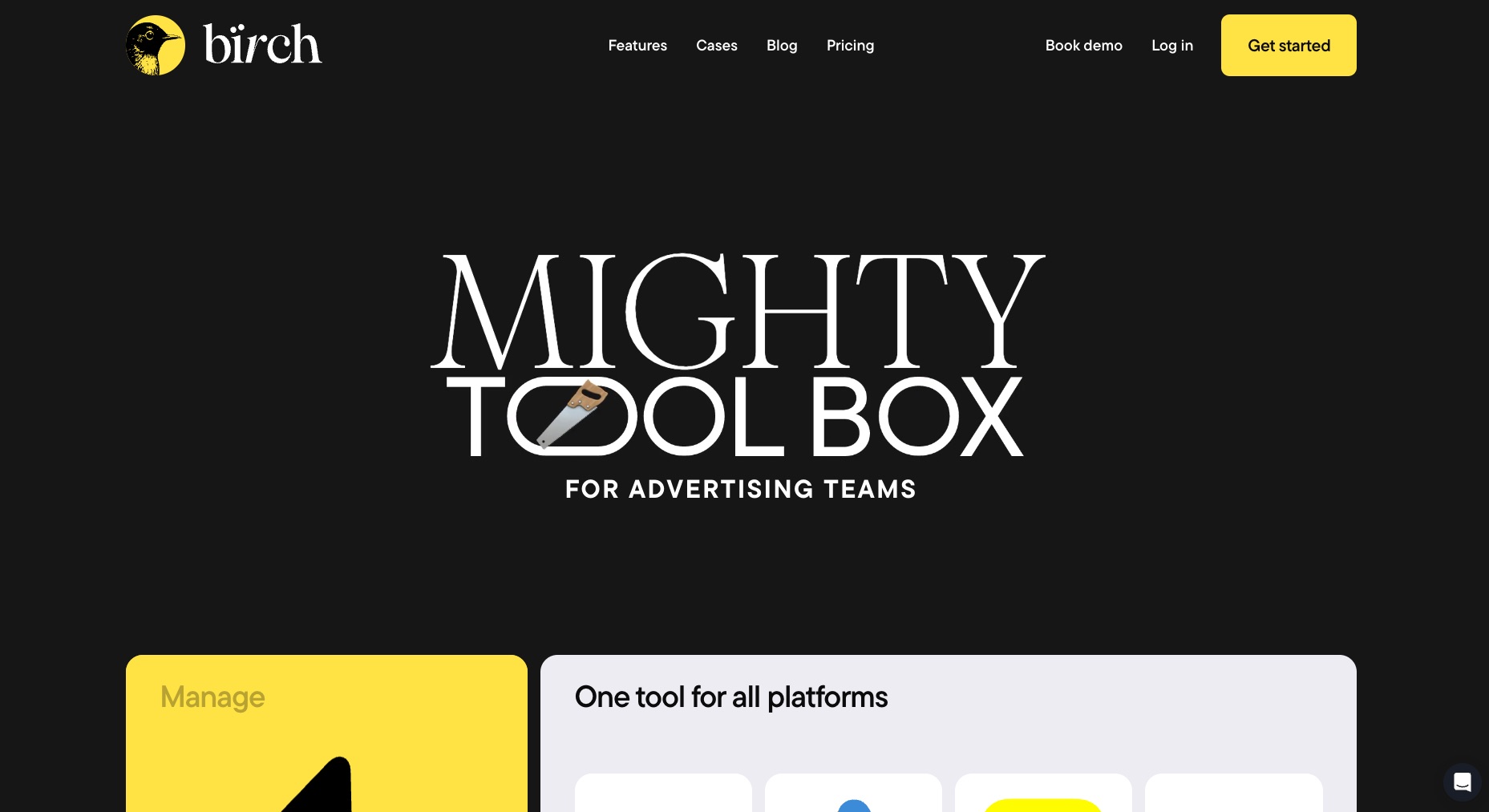
I was introduced to Revealbot (now Bitch) by a friend in affiliate marketing who relies on custom rule automation.
Revealbot lets you set triggers that pause, adjust, or boost budgets in real time across Meta, Google, YouTube, and TikTok. In addition, it offers:
- Real-time budget reallocation to well-performing ads
- Automated rotation of creative elements
- Slack notifications keeping your team informed of campaign changes
Pricing begins at around $99 per month.
If you run ads on several channels and prefer a “set it and monitor it” system with advanced rules, Revealbot can significantly reduce the manual work.
11. SpyFu

SpyFu gives you insight into competitor keywords and historical data for both organic and paid search.
It focuses mostly on Google and Bing. For advertisers, the main benefits include:
- Identifying the keywords competitors consistently use
- Reviewing performance of competitor ad texts
- Tracking competitors’ ad positions over time
Plans range from $39 to $299 per month, based on the detail level.
Note that SpyFu’s data is mainly focused on the U.S., so if you serve international markets, the coverage might be limited.
12. ClickCease
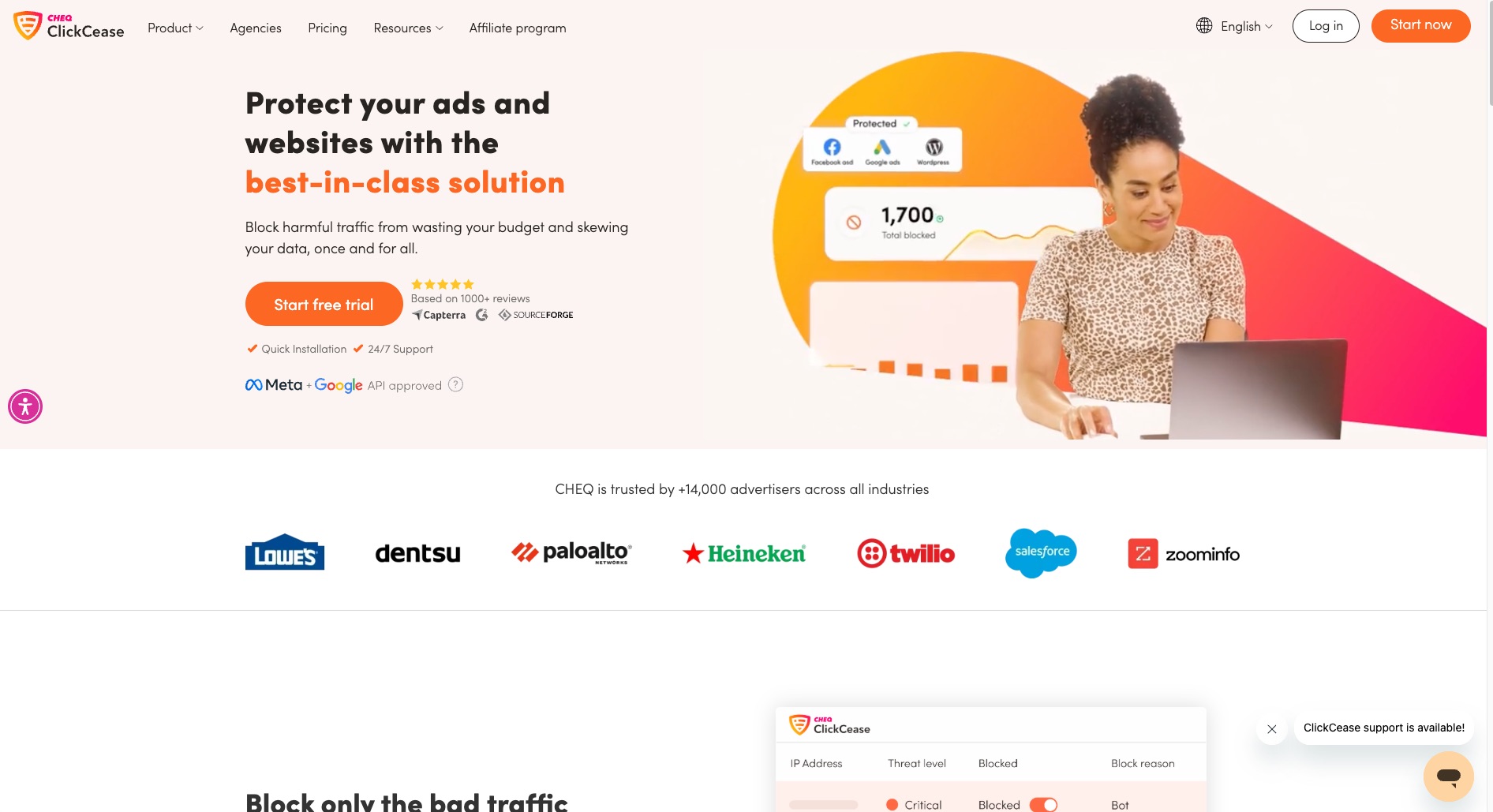
If you’ve run a campaign that seems to waste money on poor clicks, click fraud might be the issue. ClickCease helps you:
- Monitor IP addresses and block suspicious ones
- Automatically file refund claims with Google or Facebook
- Protect smaller campaigns from harmful click activity
With plans ranging from $69 to $109 per month, the value of ClickCease depends on how frequently you experience click fraud.
It’s worth a look if you notice unusual spikes in non-converting clicks.
13. Unbounce
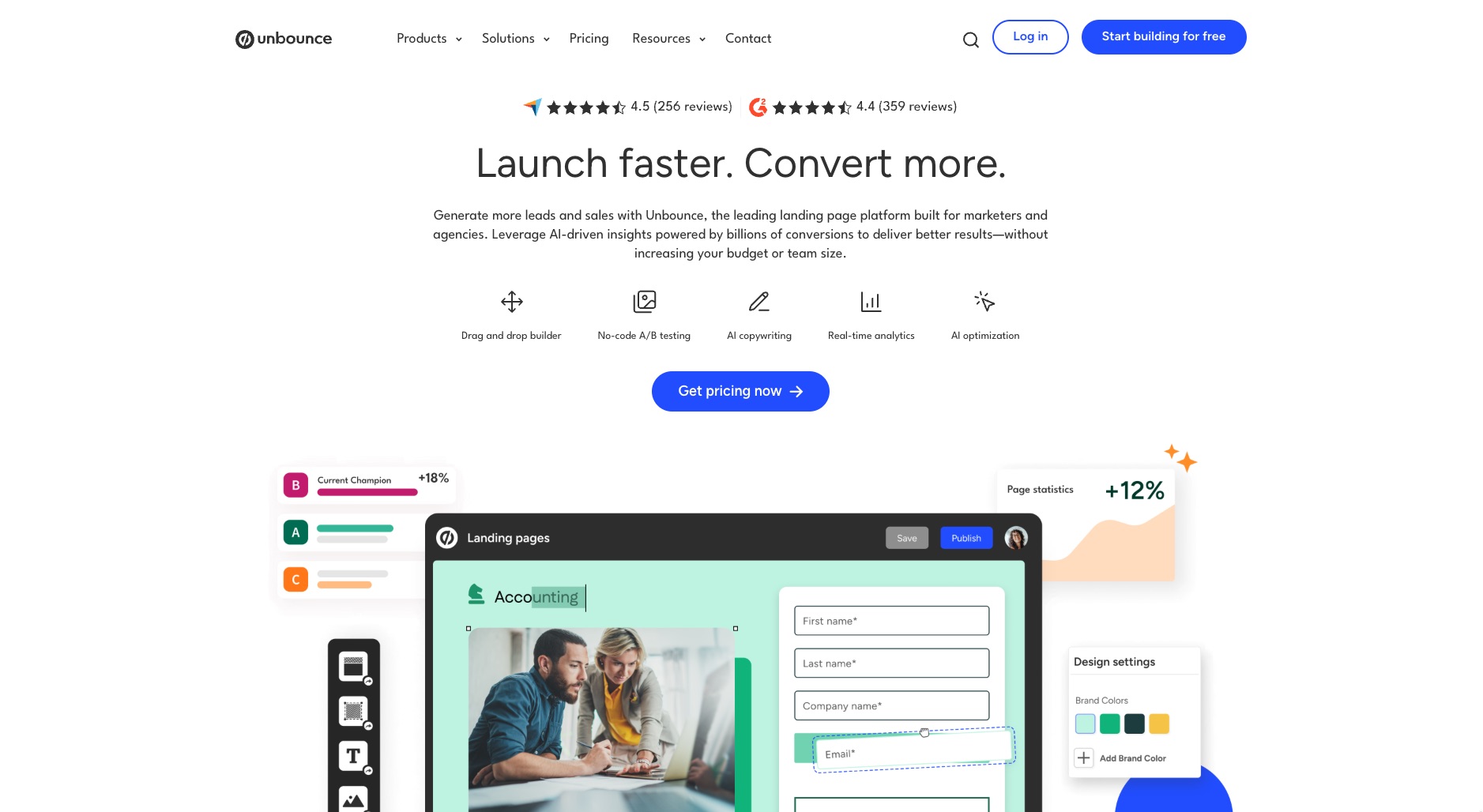
Unbounce is not an ad management tool, but it is included because many advertisers overlook what happens after a click.
You can optimize your ads all day, but if your landing page leaves something to be desired, conversions will suffer. Unbounce offers:
- A drag-and-drop builder with high-converting page templates
- Built-in A/B testing that doesn’t require a developer
- An AI feature called Smart Traffic that adapts landing pages for different visitors
Pricing starts at around $99 per month. Improving your landing pages with Unbounce can have a big impact on your ad results.
14. Acquisio
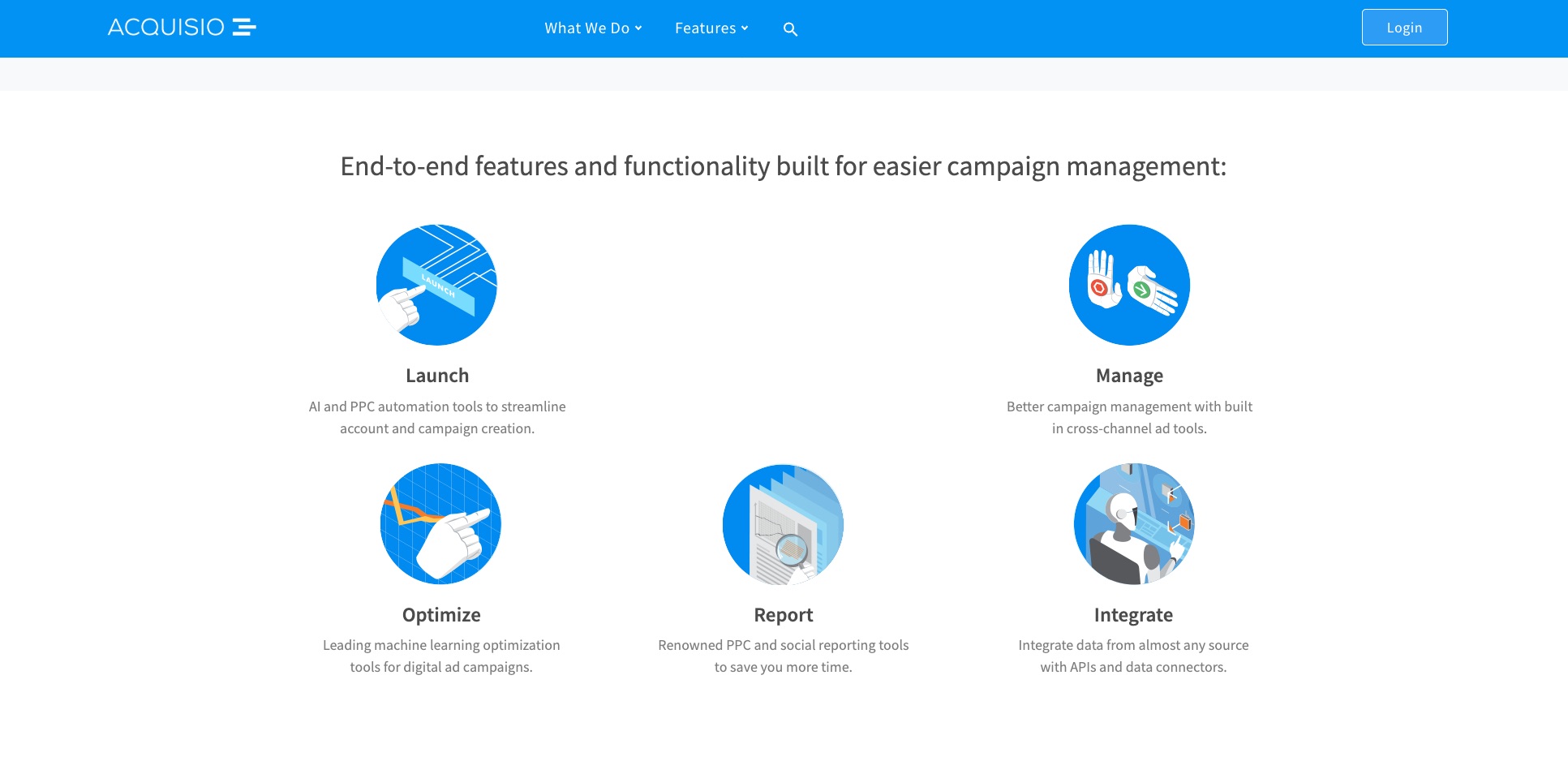
Acquisio is aimed at agencies and marketers who manage multiple accounts.
Its AI Bid and Budget Management tool optimizes bids throughout the day while distributing your budget efficiently. Key features include:
- Multi-account automation using customizable rules
- Dashboards that summarize performance across channels
- Integrated reporting for client work
Pricing begins at about $199 per month, with adjustments based on ad spend or added users.
Although the interface may feel a bit outdated, it reliably meets the needs of many professionals.
Key Takeaways and Which Tool Might Fit You Best
You might be wondering how to choose from so many options. Here’s a quick guide:
- If you need extensive automation and precise control, consider Optmyzr, Skai, MarinOne, or Revealbot.
- For a tool that’s easier for small businesses, WordStream or Adzooma could be a better fit.
- If detailed competitive research is your focus, Semrush or SpyFu might suit you.
- To protect against click fraud, look at ClickCease.
- For improving the experience after the click, Unbounce is a strong option.
- If you manage many client accounts, Acquisio, MarinOne, or Skai may work well.
- For those who work closely with a CRM in B2B, HubSpot Ads is a good match.
- And if you rely on product feed ads for e-commerce, SEO.AI is worth checking out.
When I first managed Google Ads for a family friend’s roofing business, everything was handled manually.
Budgets were depleted in days, keyword management was chaotic, and it was a stressful situation.
Then I tried a free trial of a PPC management tool (WordStream, at the time), and things got much better.
Even one useful automation or suggestion can save hours of guesswork - especially if you’re new to this work.
Comparison Table
Here’s a quick side-by-side reference:
Want to try the #1 AI Toolkit for SEO teams?
Our AI SEO assistants helps write and optimize everything - from descriptions and articles to product feeds - so they appeal to both customers and search engine algorithms. Try it now with a free trial→

![14 Advertising Optimizers for Google [That Don't Suck]](https://cdn.prod.website-files.com/627a5f477d5ec9079c88f0e2/6613aaaa53d5b53093f7b8b3_oskar-mortensen.jpg)










